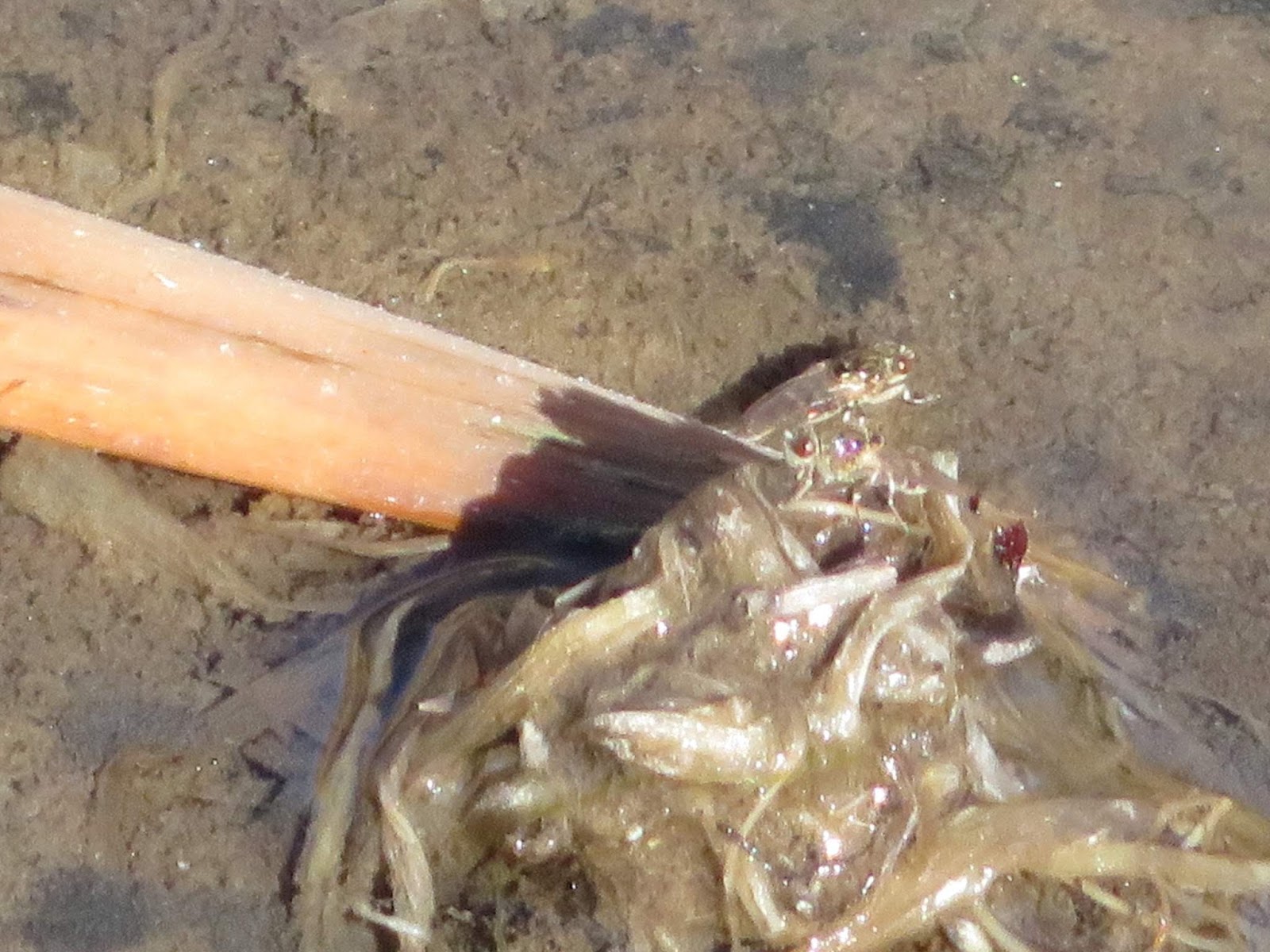Today is the last warm day before a pretty impressive cold front heads into the area. The ducks are chowing down and very active right now.I think out of all the birds seen in Corrales I like the ducks the best, they are beautiful and also damn smart. They have very expressive eyes, too. The differences between the species can be obvious, and also very subtle.

Inaturalist is a good general purpose wildlife ID application, but is not up to the task of many bird and insect ID's. Still, it's good enough for me, and the experts who chime in eventually are usually very good (often very blunt in their assessments of my picture quality). This duck is female mallard colored, but the bill is the wrong shape and too big for the small bird to be a mallard. I think it's a shoveller, but there are whole flocks of birders out there who will be happy to correct me.
just about all the birds are now paired up, with the males jealously guarding a single female each. The mallards are the most gregarious, but also seem to have the widest variety of behaviours from secretive, to aggressive, to totally tolerant of other ducks.
not to sure what duck this one is. He reminds me of the sidekick robin out of one of the over-the-top batman movies from the 90's.
not to sure what duck this one is. He reminds me of the sidekick robin out of one of the over-the-top batman movies from the 90's.
This duck is another mallard look-a-like. The size and the beak shape is also wrong. Mallards often hybridize, but this one I think is a gadwall.
Here are the typical mallards, male and female. Interestingly, when under the russian olives, the male is the harder one to spot (if they are holding still)
Teals are a type of duck that is more commonly "flighty." This is the more usual green winged teal.
This gorgeous cinnamon teal has a cool pale blue stripe on his wing, wheras the green winged teals have a green strip instead. (unsurprisingly).
if you look even closer at the stream bed, you might see this mottled coloring in the sand. Each one is a small crater where an annelid (worm-like thingy) has tunneled up from the substate into the oxygen rich waters above. This is one of the main things ducks are looking for when they swim around. The black is colored by iron in an acidic, oxygen poor environment. The lighter sediment over laying this is a silica rich (sandy) layer of wind blown dust that is now being carried downstream.
Asiatic clams do a great job of filtering the water and removing contaminants and bacteria. Many molluscs die in the icy conditions, but they are slowly spreading into all parts of New Mexico waterways. The larger specimens, if they survive the cold winters, do not actually have many predators. I have yet to see a raccoon eat one. You can see the bright green dots of the duckweed around the shells, as they all proliferate together in the warm, shallow waters.
algae is growing quickly on any surface that isn't mud. The filaments of green act as nets that trap particles. This makes great habitat for aquatic stages of many insects. Algae usually needs deeper, clearer water than the clear ditch can provide,
The aquatic plants are now all growing well. They usually avoid silty water, and this area of fast moving shallow water with a sandy bottom is perfect for them to grow. Grdaually silt will gather at their base and provide the much needed iron and other nutrients for the shallow roots to push into. With the irrigation in the Summer, the increased water depth should allow this patch to become established.
Many grasses are adapted to marshy conditions and now the ice has retreated, the perenial roots are putting out their first of the next years green spears. On the left you can see the yellow stems from the previous year, covering and protecting the new growth below it.
I can't tell yet what plants these dicotyledons (not grass) will become if they survive the cold front this week-end, there should be prenty of real estate to grow into.
the many types of birds continue to forage in the undergrouwth of the russian olives on the banks. I think most are looking for insects, and are not as elegant as the insect catching specialists. The thick, clumsy beak of this rosy finch describes well the generalised diet of these birds.
The doves are mating and feeding, and these feathers are all that remain of an individual that forgot it had to also look out for cooper's hawks.
This photo did not come out great, but shows some sort of fly swarm breeding in the shallows of clear ditch. Flies usually rest in the heat of the afternoon, but I think they are brine flies. They can rest on the surface of the water using the surface tension as they hunt around and avoid the various spiders and birds chasing them about.
Of course, spring cannot be official until the termites have swarmed. This group is early, but still. The back ones with wings are the drones, I think. The white one are subterranean and pretty tasty according to the birds. The termites in new mexico eat mostly wet cardboard and not much into destroying houses like the ones you see in cartoons.


















No comments:
Post a Comment